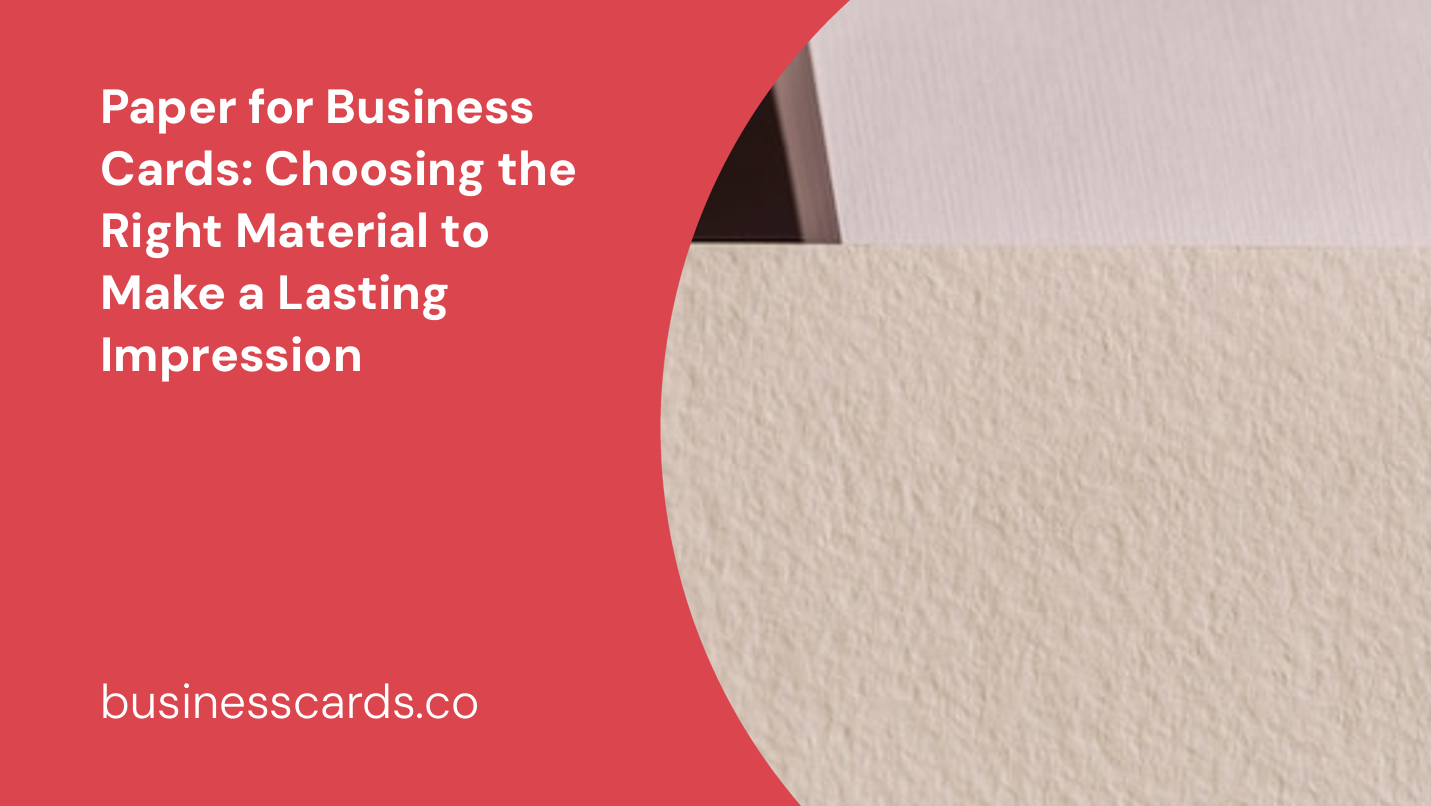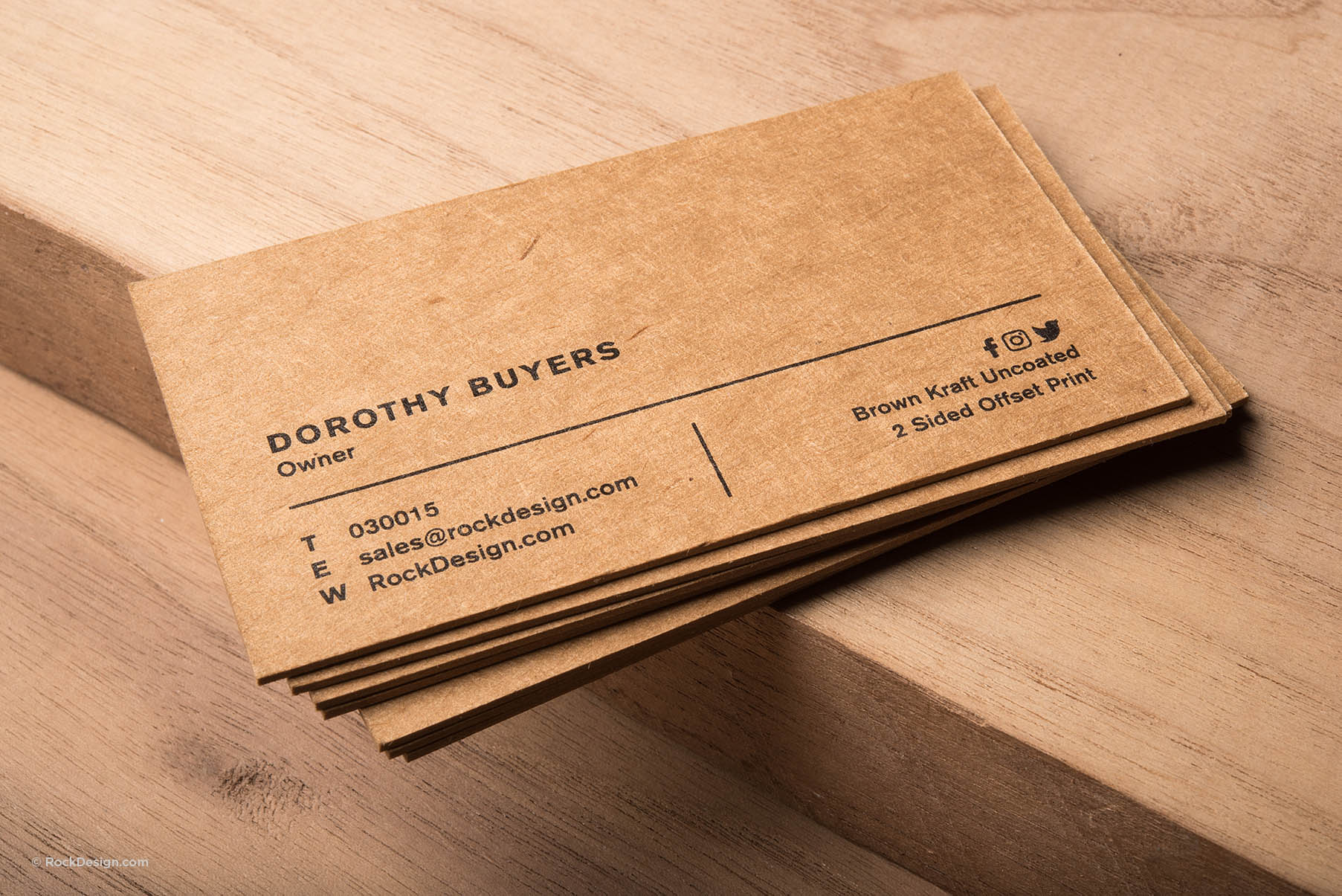
Are you starting a new business or looking to refresh your brand? One of the key aspects of building a professional image is having well-designed business cards. But have you ever stopped to consider the importance of the paper you use for your cards? The paper you choose can make a significant impact on how your business is perceived. In this article, we will discuss the different types of paper commonly used for business cards, their unique characteristics, and how to make an informed decision when choosing the right paper for your business cards.
Types of Paper for Business Cards

When it comes to selecting the paper for your business cards, there are several options available, each with its own set of characteristics and advantages. Let’s take a closer look at some of the most commonly used types of paper for business cards:
1. Standard Cardstock
Standard cardstock is the most popular choice for business card printing. It is a heavy-weight paper that offers durability and a professional feel. Typically, cardstock is available in different thicknesses, with the most common options being 14pt and 16pt. The higher the point value, the thicker and more substantial the card will feel.
2. Matte Coated Cardstock
If you prefer a non-reflective finish for your business cards, matte coated cardstock is an excellent option. The matte coating provides a smooth and elegant appearance, offering a sophisticated look and feel to your cards. This type of paper is particularly suitable for designs that feature more text, as it reduces glare and ensures legibility.
3. Glossy Coated Cardstock
For a glossy and eye-catching finish, glossy coated cardstock is the way to go. This paper has a high-shine coating that enhances color vibrancy and gives your cards a polished look. A glossy finish is often preferred for designs that have vibrant graphics or photographs, as it adds a touch of professionalism and visual appeal.
4. Uncoated Cardstock
Unlike coated cardstock, uncoated cardstock does not have any special coating applied on its surface. It offers a natural and tactile feel, making it a popular choice for businesses looking for a more organic and artisanal impression. Uncoated cardstock is also ideal for designs that incorporate handwritten elements, as it allows for easy writing or stamping.
5. Recycled Cardstock
As sustainability becomes increasingly important, many businesses are opting for eco-friendly options. Recycled cardstock is made from recycled materials, reducing the environmental impact of your business cards. This type of paper often has a textured or speckled appearance, which adds a unique and rustic charm to your designs.
Factors to Consider When Choosing Paper for Business Cards

Now that you are familiar with some of the different types of paper for business cards, it’s important to consider certain factors before making your final decision. Here are a few key considerations to keep in mind:
1. Brand Identity and Image
Your choice of paper should align with your brand identity and image. Consider the nature of your business, target audience, and the overall aesthetics you want to convey. For example, if you run a luxury brand, a thick and glossy cardstock may be the best option to portray a high-end look and feel. On the other hand, if your business focuses on sustainability, using recycled cardstock would be a more suitable choice.
2. Design Elements
Think about the design elements you plan to incorporate into your business card. If you have a design that heavily relies on images, a glossy coated cardstock would showcase those visuals beautifully. Conversely, if your design emphasizes readability and simplicity, a matte coated or uncoated cardstock may be more appropriate.
3. Budget
Your budget is an important factor when choosing paper for your business cards. While there are various options available, each with their own price range, it’s crucial to find a balance between quality and cost. Consider your overall printing budget and choose a paper that meets your needs without exceeding your financial limitations.
4. Printability
Consider the printability of the paper you choose. Some types of paper may work better with certain printing techniques, such as letterpress or digital printing. Speak with your printer or design professional to ensure that your chosen paper will yield the desired results.
Making an Informed Decision
Choosing the paper for your business cards is an important decision that can impact how your brand is perceived. By considering factors such as brand identity, design elements, budget, and printability, you can make an informed decision and select a paper that best represents your business.
Remember, your business card is often one of the first touchpoints someone has with your brand. Investing in high-quality paper will leave a lasting impression and help establish credibility and professionalism. Whether you opt for standard cardstock, matte coated cardstock, glossy coated cardstock, uncoated cardstock, or recycled cardstock, select a paper that aligns with your brand vision and appeals to your target audience.
Ultimately, the right paper choice can elevate your business cards from a simple information card to a powerful marketing tool that stands out from the competition. So next time you design or print business cards, make sure to carefully consider the paper you choose and leave a lasting impression with your clients and prospects.
In conclusion, the paper you choose for your business cards can have a significant impact on how your brand is perceived. Consider the different types of paper available, such as standard cardstock, matte coated cardstock, glossy coated cardstock, uncoated cardstock, and recycled cardstock, and select the one that aligns with your brand identity and design elements. By making an informed decision and investing in high-quality paper, you can create business cards that make a lasting impression and set your business apart from the competition. So, grab your preferred paper and start designing your business cards today!
Sophia is a branding expert who intertwines style and substance in her writing. Her marketing background and love for fashion contribute to her unique take on business card design. When not writing, Sophia explores her creative side through painting and DIY projects.